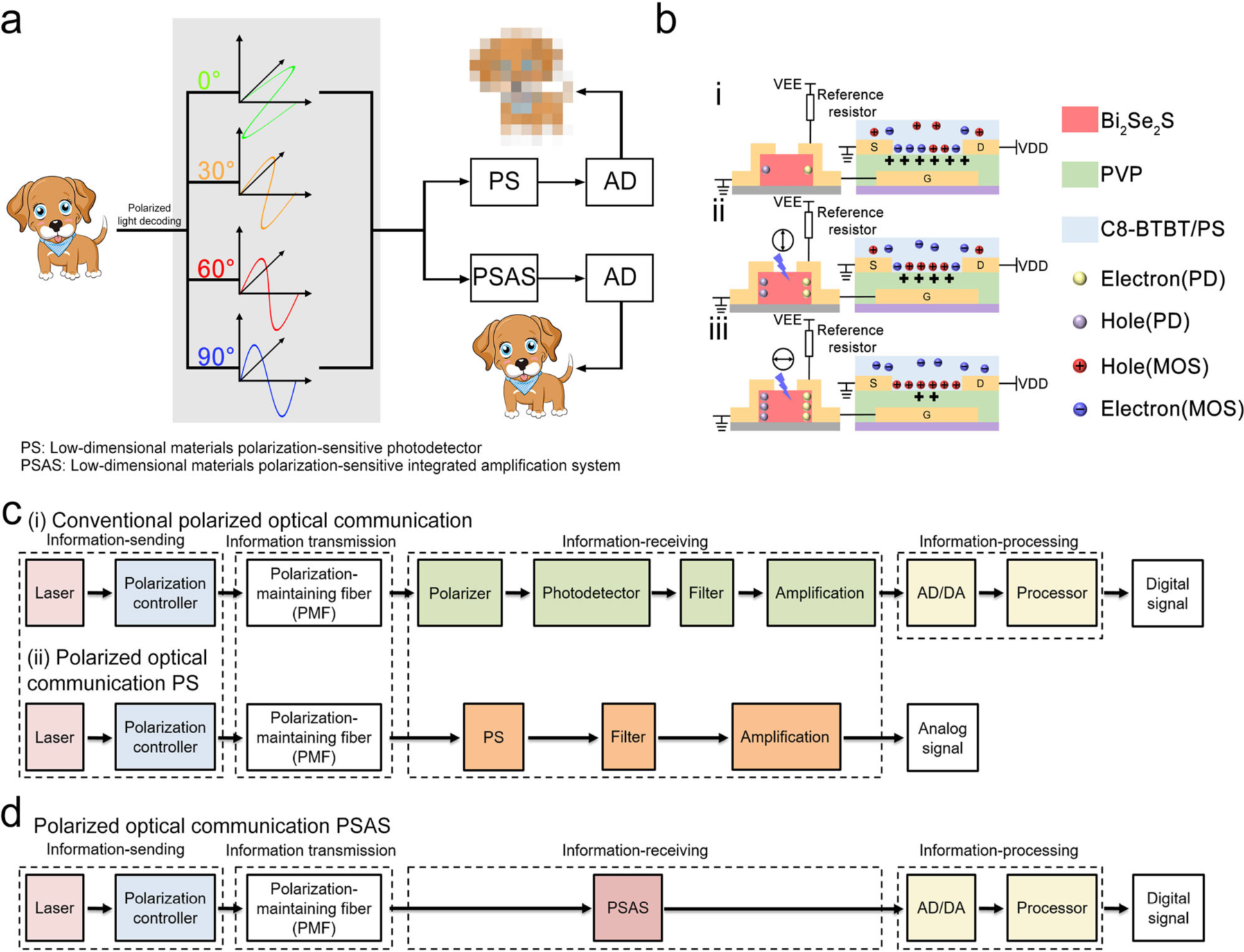The polarization state of light carries a large amount of effective information, which cannot be obtained through the intensity, wavelength, frequency, and phase. The use of polarization-sensitive photodetectors to achieve effective detection of polarized light can enhance the information of detected objects, significantly improving the target contrast. Therefore, polarization-sensitive photodetectors are widely utilized in various fields and are of great importance for industrial applications, national security, biological diagnosis, and astronomy. However, the structure of traditional detection systems for polarized light detection is complicated and requires prepositive polarizer arrays supplemented by filters, amplifying circuits, and complex decoding algorithms for outputting digital information. This makes such systems bulky and limits the scope for miniaturized integration in applications. In recent years, the rise of low-dimensional (LD) materials has opened up another way for high-performance photodetection. More importantly, some LD materials with intrinsic in-plane anisotropic structures can potentially detect polarized light without polarizers. Therefore, it is feasible to develop advanced polarization detection devices using in-plane anisotropic semiconductors. Although many LD materials have been successfully prepared for polarization-type photodetectors, there are some limiting factors such as instability under environmental conditions, narrow optical response range, and insufficient anisotropic photocurrent rate (<10). These lead to the inability to achieve digital output currently.
Recently, Shen's group at the State Key Laboratory for Superlattice, Institute of Semiconductors, Chinese Academy of Sciences, has designed a simple and universal flexible polarization-sensitive amplification system (PSAS) to improve the anisotropic photocurrent rate of LD materials. A C8-BTBT/PS-based organic field-effect transistor (OFET) was integrated into a flexible polarization-sensitive Bi2Se2S nanowire (NW) photodetector, constructed a polarization-sensitive amplification system, which enhances the polarization sensitivity of the system by several orders of magnitude. The proposed system exhibited an effective increase in the anisotropic photocurrent ratio of the NW photodetector from 1.24 to 375 under 532 nm light irradiation. As a proof-of concept, they connect the system to the designed circuit to demonstrate the transmission of information through polarized light and use our integrated system for detection to realize the digital output of polarized optical information and information disguising. The results entitled "Integrated polarization-sensitive amplification system for digital information transmission" was published in Nature Communications (2021,12, 6476).

Schematic illustrations of the current flexible integrated polarization-sensitive amplification system and the conventional polarization amplification systems.(Image by RAN Wenhao/LOU Zheng/SHEN Guozhen)
